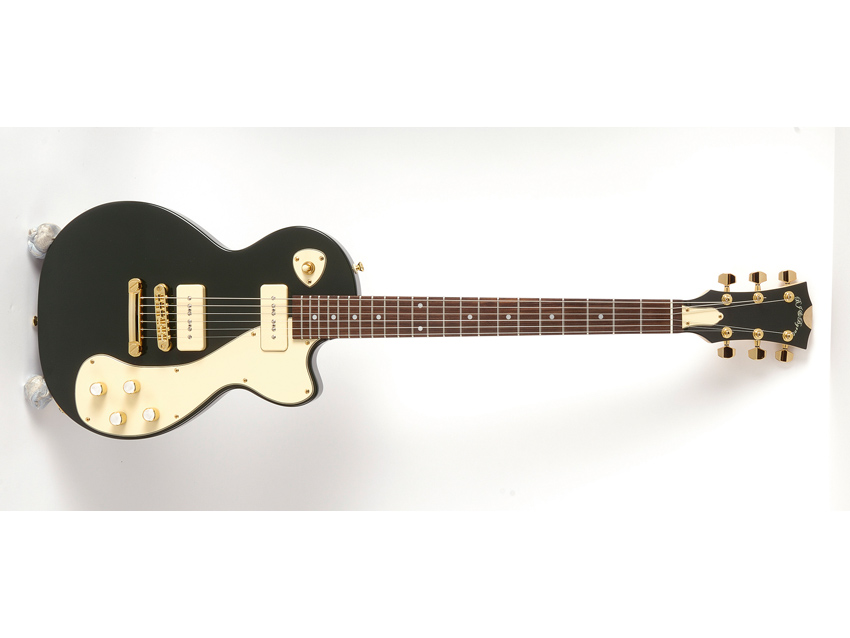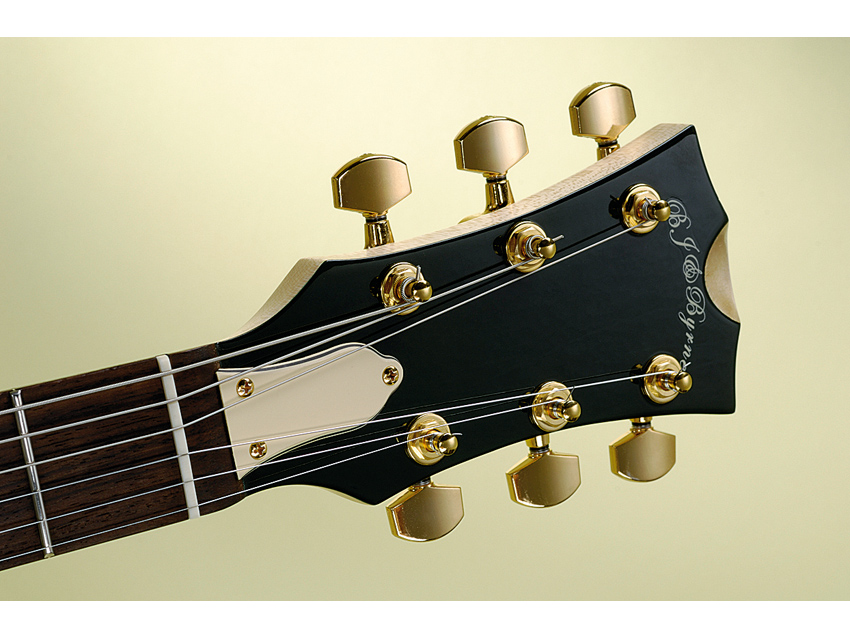MusicRadar Verdict
The Apollo is a refreshingly simplistic design with quality parts, very good sounds and a strong retro vibe.
Pros
- +
'Anti-posh' retro design; sounds; price.
Cons
- -
Not everyone will get the appearance; the toggle switch plate may be going a bit too far…
MusicRadar's got your back

Apollo has landed.

The headstock front is lacquered to match the body and topped with Gotoh tuners.
In a very loose sense, the Apollo is based on a Les Paul. But it's a bolt-on rather than a set-neck, while the uncontoured slab body is English ash and the neck maple.
It's more like a seventies Gibson Marauder than a mid-fifties Special but, thanks to the generous cream scratchplate that houses the controls and the separate piece used to anchor the three-way toggle switch, one designed in Europe or Japan in the sixties!
But this 'anti-posh' design ethic, aside from being relatively swift to manufacture, is intentional. "The modern, 'streamlined' guitars with skinny necks and 24 frets is a market I don't really understand," says Brian Troup of BJ & Byrne. "We don't really sell that type of guitar in the shop."
"I get the guys that want something with a more classic look," he continues. "The sort of shape and the body thickness of the Apollo came from an old no-name guitar I had with a Hofner neck on this body. It had two P-90s on it and it was probably the nicest guitar I've ever owned and everyone who played it loved it."
The finish
The deep-hued green cellulose finish is admirably glossy but far from mirror-flat, yet there's a functionality to the build that, like Gordon-Smith, isn't high craft but very utilitarian.
The scarf-jointed neck - a bought-in pre-made blank that's shaped and fretted by BJB - rakes back more than a Fender bolt-on thanks to the Gibson-style hardware and is not only nicely shaped, with a full-ish oval C, but tidily fretted and finished on the back with oil and wax, not cellulose.
"I just speak to people in my shop: what do you prefer, heavy lacquer, smooth neck…? Anyone who picks up an old, early sixties Fender neck, it always comes down to the wood, and they always comment on how nice it feels.
"We lacquer the face of the headstock to match the body and we'll lacquer the neck back if you'd prefer it that way, it's really not a problem, but from the off more people seemed to prefer this oil finish."
There's been no skimping on parts: all the hardware is Gotoh and the pickups are from the UK's own Bare Knuckle. "I have no idea how, or why, but I just think the tone is fantastic. To be honest it was Bare Knuckle that gave me the idea to start the company. I'm very patriotic about Britain, not just Scotland, you know?"
Dave Burrluck is one of the world’s most experienced guitar journalists, who started writing back in the '80s for International Musician and Recording World, co-founded The Guitar Magazine and has been the Gear Reviews Editor of Guitarist magazine for the past two decades. Along the way, Dave has been the sole author of The PRS Guitar Book and The Player's Guide to Guitar Maintenance as well as contributing to numerous other books on the electric guitar. Dave is an active gigging and recording musician and still finds time to make, repair and mod guitars, not least for Guitarist’s The Mod Squad.
“Built from the same sacred stash of NOS silicon transistors and germanium diodes, giving it the soul – and snarl – of the original”: An octave-fuzz cult classic returns as Jam Pedals resurrects the Octaurus
What’s the buzz? Meet Yellowjacket, Cherry Audio's recreation of EDP’s trend-setting Wasp from 1978
“A fabulous trip through all eight songs by 24 wonderful artists and remixers... way beyond anything I could have hoped for”: Robert Smith announces new Cure remix album










